A few years ago, I moved to the center of a mid-sized western town and started spending more time than I should staring out the window. In the sky, circling above big cottonwood trees and barely moving their wings, were dozens and dozens of vultures.
They rarely landed, at least not that I could see. But I couldn’t help that gut feeling: What died, or what is going to die, making them circle like that?
The answer was probably nothing. There was likely no hidden carcass.
And if something was dead, little is better for natural cleanup than a swirling kettle of vultures.
What I noticed were turkey vultures – one of three vulture species in the U.S. and one of only seven in the western hemisphere – making their way from breeding grounds near the Canadian border to their wintering area as far south as Central or South America. Vultures soar and circle even when they’re migrating.
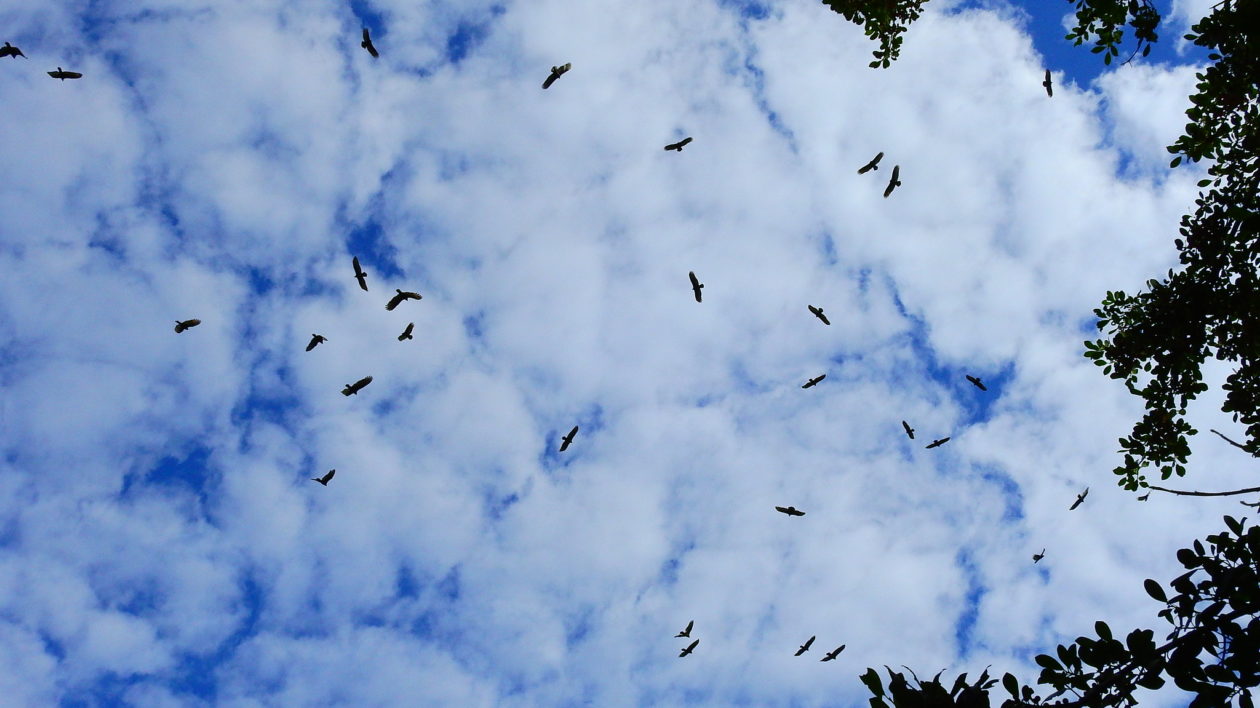
They often leapfrog their residential counterparts in warmer stretches of the U.S., leaving the best sanitizing duties to the locals as they ride thermal waves to warmer places.
I felt guilty for that unnerving feeling that circling vultures brought to my stomach. But I’m not the only one that can’t help thinking vultures are some harbinger of death, says Alex Wehrung, an educator and spokesperson for the Wildlife Center of Virginia. Many people view vultures as repulsive at best and bad omens at worst.
While the job of a vulture may not be the most glamorous – most humans can’t imagine sticking our bald heads inside a dead or rotting carcass – their role in our ecosystems could not be more critical.
“Vultures are incredibly beneficial to have around. They are scavengers and are consuming carrion, which if not picked up by others will rot and decompose and transmit possible bacteria and disease to other animals and humans,” Wehrung says. “While vultures might not look pretty to some people, they certainly help make our habitats much healthier.”
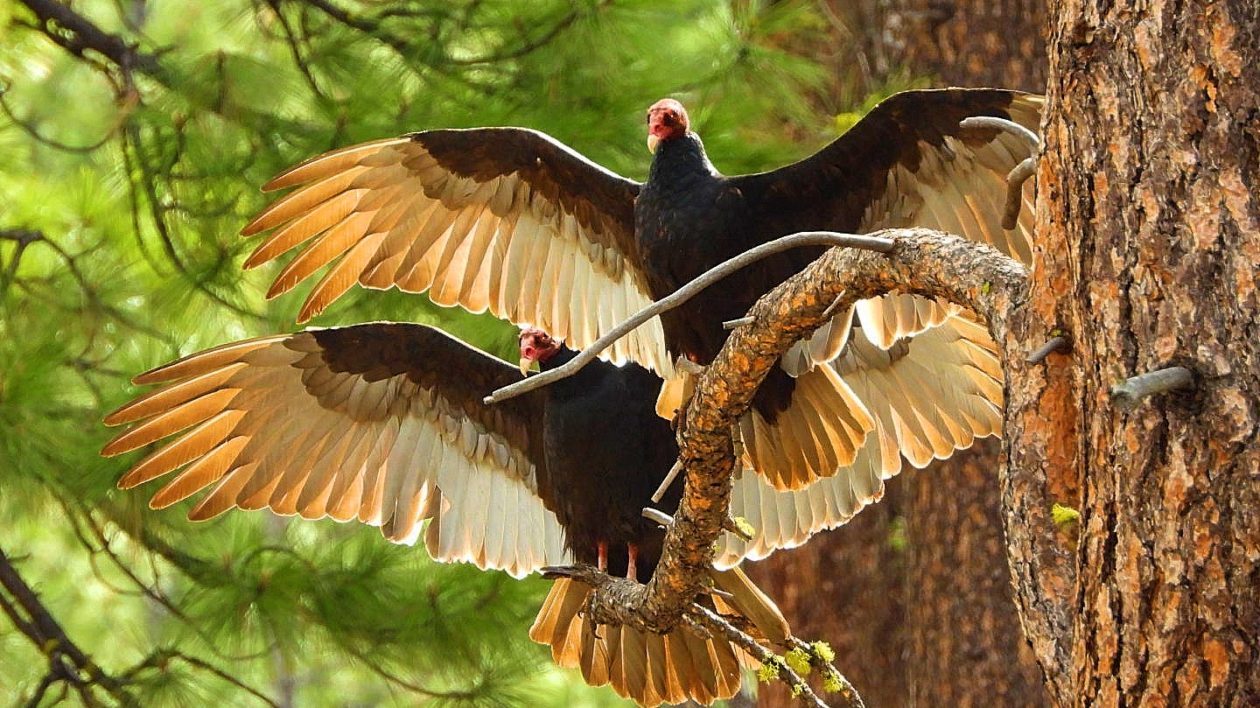
Nature’s Cleaning Crew
The taxonomic identification of vultures in North and South America can be a little confusing. They’re often considered raptors, but scientists believe they may well be more closely related to storks than carnivorous fliers.
The U.S. has three species of vultures – black and turkey vultures and the California condor.
They’re nature’s cleaning crews, says Wahrung, the creatures willing to dig in and rid the ground of carcasses that can otherwise spread diseases, parasites and bacteria.
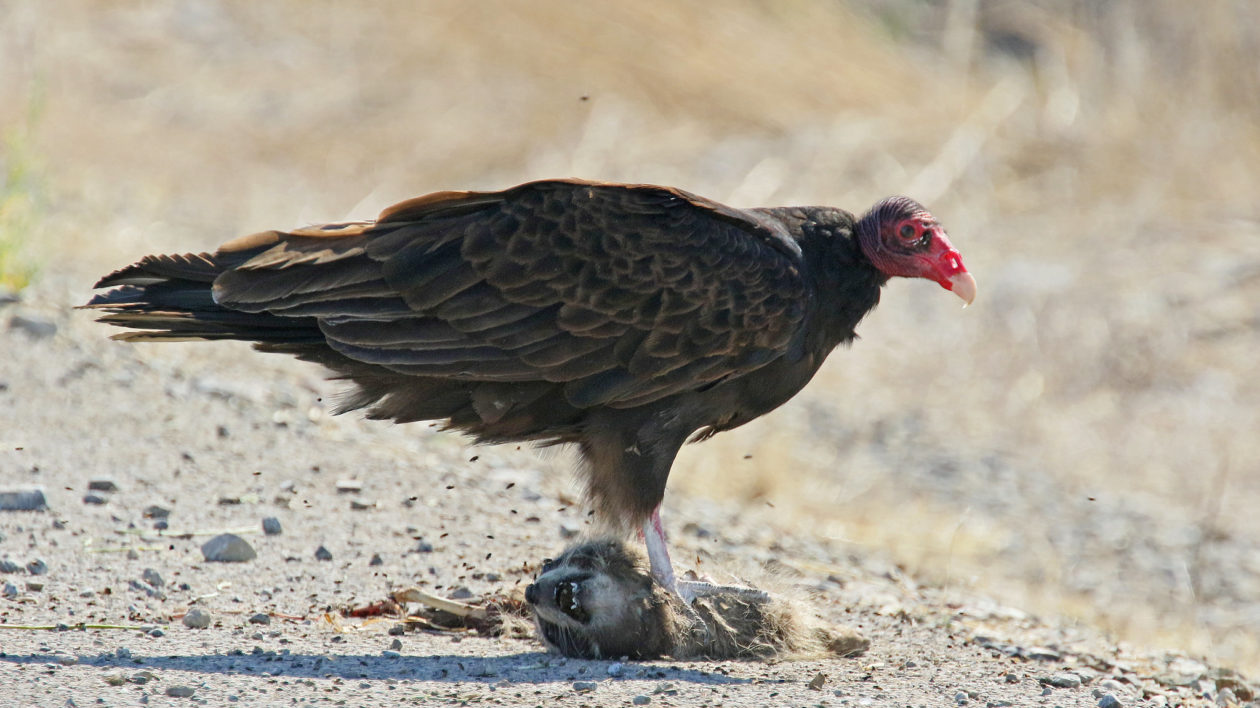
The ones you may see most often from your house or apartment window are either the black or turkey vultures, depending on where you live. Turkey vultures extend coast to coast, and breed as far north as Canada then migrate to South America. Black vultures live largely in the east and southeast U.S., also extending their range into Central and South America. Look closely, and you can tell the difference between eagles and vultures from the way they fly, Wahrung says, perfectly suited to their nearly 6-foot wingspan.
“They are built to soar. They have broad, long wings, which when extended catch those thermal updrafts, which is why we see them migrating over mountain ranges,” he says. “Eagles are powerful fliers with steady beating wings. Vultures soar almost exclusively.”
While soaring, turkey vultures are using their incredible sense of smell to sniff out any potential dead food. It’s so adept, in fact, that in 1938, the Union Oil Company injected an organic chemical called mercaptan into gas line and monitored vulture activity to check for leaks, according to All About Birds, a feature of the Cornell Lab of Ornithology.
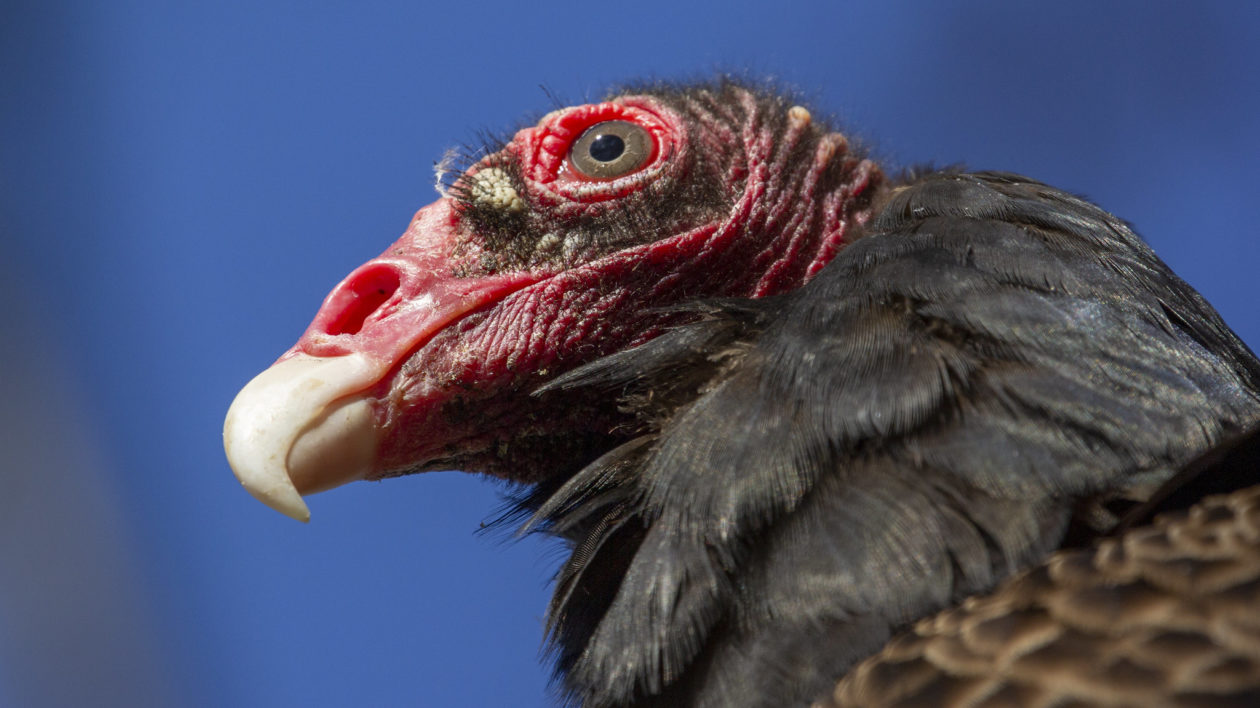
“Some mercaptans smell like rotting cabbage or eggs,” Cornell writes. “To us, mercaptans smell horrible, but for vultures they are associated with fine dining.”
In fact, a 2017 paper published in Scientific Reports showed that turkey vultures have olfactory bulbs (basically the part of the brain that receives information about smell) that are four times as large as the black vulture, even though their brains are 20 percent smaller.
That’s why black and turkey vultures are often seen together. Black vultures rely on their eyes to find food. Turkey vultures do both. When a turkey vulture dives to the ground, black vultures will follow, knowing food is on the way.
Up close, turkey vultures have reddish heads, akin to those on a wild turkey (hence the name) and black vultures have a dark grey featherless head. While the lack of feathers on their heads may seem unsightly – and result in few shirts, hats or flags emblazoned with their image – it’s actually a critical adaptation.
Stick a feathered head in a three-day old dead deer, and the opportunity for harmful bacteria and parasites abounds. Bald heads are uniquely created to slough off any bits.
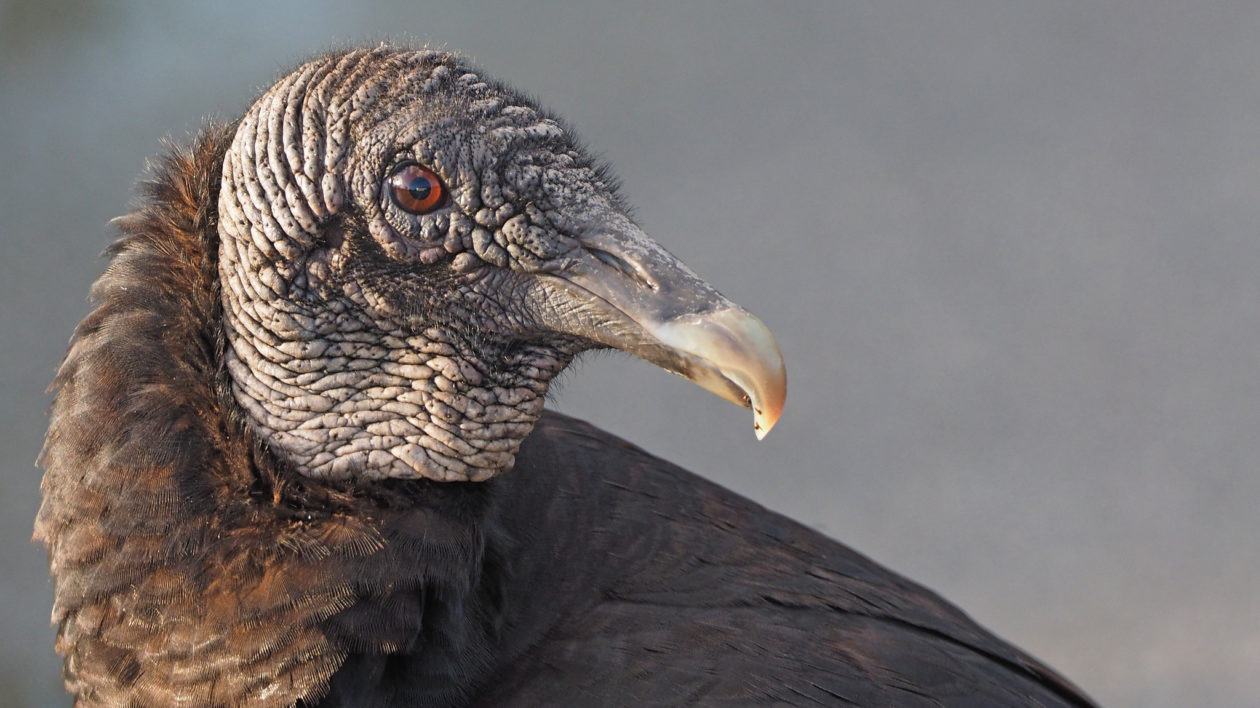
Threats to Vultures
Fortunately for human and landscape health, both turkey and black vulture populations are steady in the U.S. Turkey vultures are even expanding their range as our climate warms. The Teton Raptor Center in northwest Wyoming rarely saw turkey vultures until the last handful of years, a sign of their movement into the area.
Their cousin, the California condor, still languishes on the endangered species list, though new policies banning lead ammunition and condor breeding programs have seen success.
Vultures in Eurasia and Africa are not faring nearly as well. They’re suffering not only from habitat fragmentation and climate change, but also intentional and unintentional poisoning and shooting.
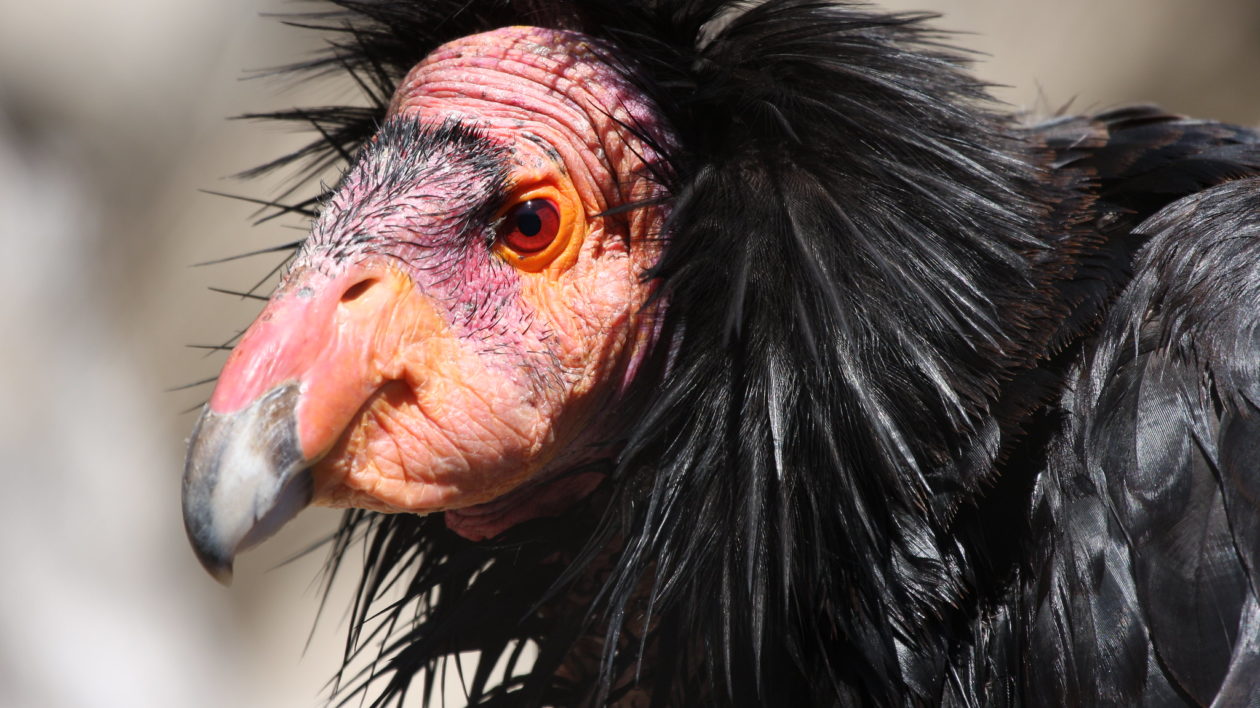
Vultures in the U.S. face poisoning by fragments from lead bullets, often left behind in gut piles during hunting season or in prairie dogs or ground squirrels shot in the prairie and plains.
“When the lead bullet hits the animal, it shatters, and 20 micrograms can kill a bird of prey,” said Meghan Warren, avian care director with the Teton Raptor Center. “Lead poisoning is definitely an issue.”
Vehicle strikes kill vultures as they feed on carcasses of roadkill.
Research can quantify the impact of fewer vultures on the landscape, including work out of India showing fewer vultures lead to more dogs scavenging which increased the rate of rabies, which caused more human deaths by rabies.
So the next time instead of watching vultures soar and wondering what sign they bring of death, I’ll send up a silent note of thanks that they’re doing the dirty work to keep our landscape clean.




I have the turkey vultures roosting on my pine tree branches. They gather together and brake them off. They poop and loose their feathers. I counted 13 last week. They are getting to be quite a nusence. they even lay on my roof. Help
Just saw a turkey vulture in Niagara WI and can say that they aren’t frightened of us one bit.
That was a very interesting and informative article. I learned a few more things about vultures.